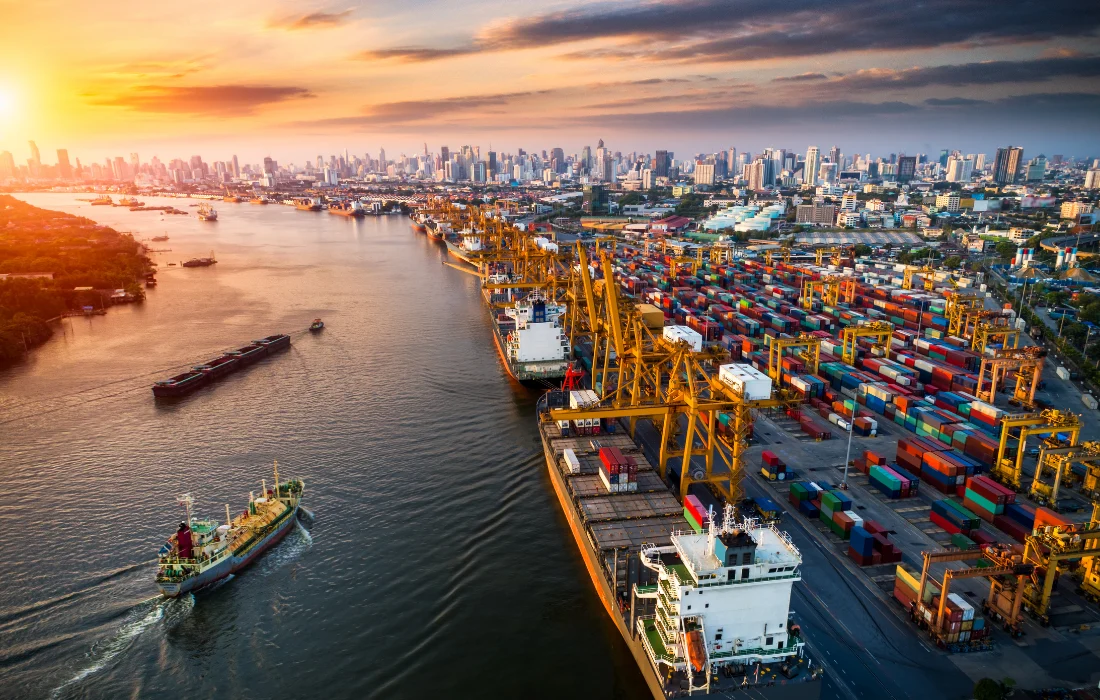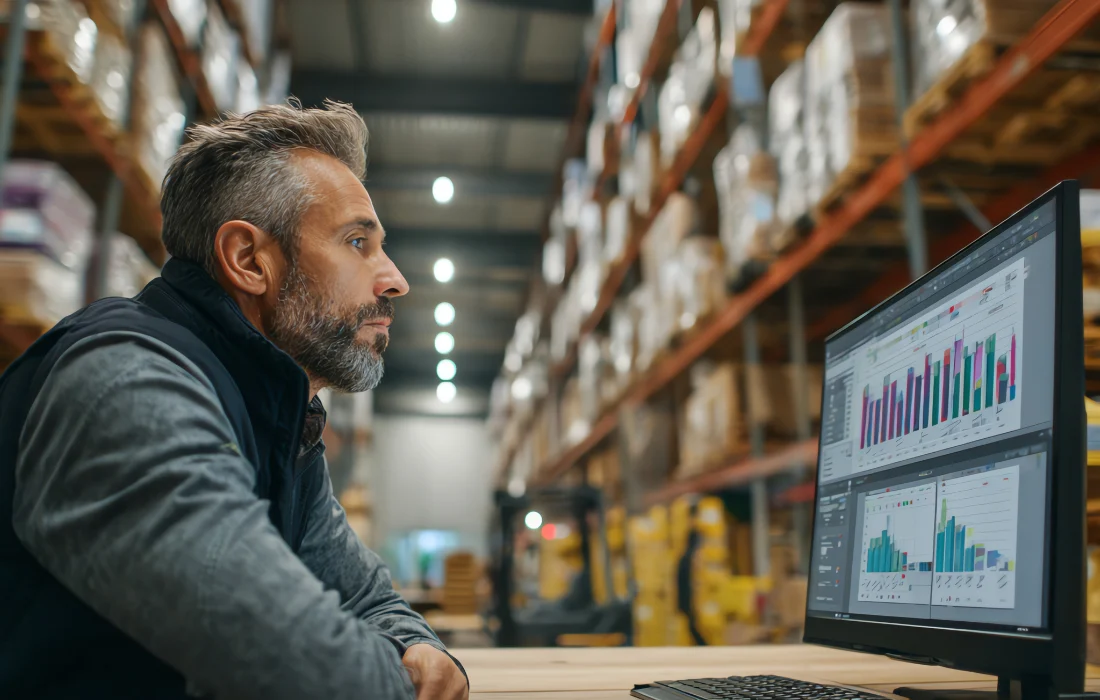Table of Contents

Trump Tariffs: Tracking the Impacts on the Packaging Industry
Uncertainty is now the new normal in the packaging industry.
Packaging tariffs can shift quickly and can cause your costs to increase dramatically.
Imagine you’re about to launch a new product, and you’ve already budgeted for your paper bags.
Suddenly, the cost of importing this program becomes much more expensive than your budget allows.
What should you do?
This scenario has become all too real for many businesses since the Trump Tariffs took effect.
To help you navigate this volatile market, we created this go-to resource, which we will update as changes unfold.
Discover how the Trump Tariffs can impact your packaging and explore practical strategies to protect your bottom line.
"Tariff-ied? The tariffs are still creating uncertainty. We understand and we've got your back."
Michael Nass, CRP Executive Vice President Tweet
What Are the Trump Tariffs?
The Trump tariffs are a broad set of import taxes introduced during the president’s second term to encourage domestic manufacturing, reduce trade deficits, and address national security concerns.
These tariffs apply to a wide range of goods, including raw materials and finished products used in packaging.
As a result, many retailers face higher costs on imported paper, plastic, aluminum, and machinery.
This has reshaped supply chains and forced many packaging companies to reevaluate their sourcing strategies.
Global Tariff Rates
| Trading Partner | Current Rate (%) |
|---|---|
| Mexico | 25% |
| Canada | 35% |
| European Union | 15% |
| Japan | 15% |
| India | 50% |
| South Korea | 15% |
| Switzerland | 39% |
| Algeria | 30% |
| Bangladesh | 35% |
| Bosnia and Herzegovina | 30% |
| Brazil | 50% |
| Brunei | 25% |
| Cambodia | 36% |
| Indonesia | 19% |
| Iraq | 30% |
| Kazakhstan | 25% |
| Laos | 40% |
| Libya | 30% |
| Malaysia | 25% |
| Moldova | 25% |
| Myanmar | 40% |
| Philippines | 19% |
| Serbia | 35% |
| Syria | 41% |
| South Africa | 30% |
| Sri Lanka | 30% |
| Thailand | 36% |
| Tunisia | 25% |
SOURCE: Yahoo! Finance
Recent Updates:
China has announced it will impose large-scale export controls on nearly all of its products, effective November 1st.
In response, President Trump has threatened to impose 100% tariffs on Chinese goods, also beginning on November 1st.
The International Monetary Fund (IMF) has warned that these new tariffs will increase costs for U.S. importers and retailers, potentially leading to higher prices for American consumers.

Trump Tariffs: How Will They Impact Your Packaging Costs?
The short answer is that costs will likely go up.
Raw material prices are already rising due to the Trump Tariffs.
Budgeting also becomes trickier when you factor in recently imposed packaging tariffs.
Companies that rely on imported packaging, such as paper bags or paper mailers, should plan for worst-case scenarios.
Even a slight jump in price per unit can add up to millions of dollars over time.
Here’s what to expect:
Increased overall costs
Tariffs on finished packaging directly increase the price of imported goods.
This affects items like paper shopping bags, mailers, and custom boxes.
Even small per-unit increases can add up to large budget shifts at scale.
A 10% tariff on imported packaging can add $10,000 to a $100,000 shipment.
Price Adjustments
When packaging becomes more expensive, businesses face tough decisions.
You can either absorb the cost and lower your profit margins or raise prices and risk losing customers.
And when packaging tariffs are so large, it’s impossible for many companies to lower their profits.
Both choices impact your bottom line and brand perception.
Shifts in Consumer Spending
Higher packaging costs can lead to higher product prices for consumers.
This may cause people to buy less, delay purchases, or switch to more affordable brands.
These changes can leave you with unsold products and a stockpile of unused packaging.
MOQ adjustments
Suppliers may raise minimum order quantities to manage their own rising costs.
This forces retailers to buy more packaging than they need at once.
It increases upfront spending and creates extra warehousing challenges.
Hidden operational costs
Tariffs don’t just increase what you pay—they also increase the time and resources needed to manage imports.
You may need to deal with new paperwork, reclassify products under updated tariff codes, or work more closely with customs brokers.
These tasks create hidden costs that strain your operations team and slow decision-making.
PRO TIP: Use these challenges as an opportunity to form deeper relationships with your packaging suppliers and collaborate on cost-saving ideas or new technologies.

Trump Tariffs: How Will They Impact Your Packaging Supply Chains?
Packaging tariffs don’t just increase costs. They also disrupt the flow of goods.
Packaging supply chains are highly interconnected across borders.
Many U.S. brands purchase finished packaging from Canada, Mexico, or overseas suppliers.
Here’s how the Trump Tariffs are causing chaos in these networks:
Increased Warehousing Expenses
Before packaging tariffs take effect or during pauses, companies may use this time to order large volumes in advance.
But this can increase expenses, such as:
- More warehouse space to hold higher inventory levels
- Rise in warehouse rental rates as demand grows
- Warehouse facility upgrades to handle larger or more diverse stock
- Increase in labor and operations costs
Holding more inventory also ties up capital and increases the risk of damage or obsolescence.
The result is a significant and ongoing rise in warehousing expenses throughout the supply chain.
PRO TIP: Conduct a cost-benefit analysis to see if ordering custom packaging in bulk will be cheaper than paying the tariffs.
Cross-Border Complexity
Your brand’s packaging may rely on materials and production from multiple countries.
If one link in this chain slows down, the entire delivery timeline may get disrupted and cause you to miss deadlines.
That means empty shelves, canceled orders, or overtime pay for workers waiting for materials.
Decades-old logistics arrangements are suddenly in jeopardy.
Seeking alternative sources for packaging products, like paper bags or paper mailers, is essential if your shipments now incur a heavy tariff.
But it does come with some challenges.
Seeking Alternatives
Switching suppliers is rarely quick or cost-effective.
It requires vetting packaging manufacturers, testing materials, and sometimes even buying new machinery.
The scramble to find tariff-free sourcing options can also boost competition.
Prices could climb again as more buyers chase a smaller pool of tariff-free domestic or overseas packaging suppliers.
It’s a careful balance between avoiding one cost spike and accidentally causing another.
International Trade Tensions
Tariffs and trade disputes continue to reshape the global packaging market.
Some suppliers may scale back or stop selling to the U.S. due to rising costs and policy uncertainty.
This volatility makes it difficult to plan for the future—since another wave of tariffs could come at any time.
However, not all overseas packaging production will be affected.
Through our global network of suppliers, we provide cost-effective options in tariff-free countries.
And should more regions be added to the list, we can shift sourcing and keep your packaging supply chain running smoothly.

Trump Tariffs: Four Strategies to Mitigate the Impact
U.S. retailers now face unpredictable landed costs, higher minimum order quantities, and squeezed profit margins.
Left unaddressed, these changes can destabilize your entire packaging procurement strategy.
You may already feel the ripple effects:
- Delays at customs
- Ivoices that exceed forecasts
- Pressure to increase prices
With consumer behavior shifting and supply chain costs rising, passivity is not an option.
The Trump Tariffs aren’t just a temporary bump.
They’re a signal to future-proof your supply chain.
Here are four strategies to mitigate the impact of packaging tariffs.
Diversify Your Supplier Base
Relying on one region for packaging puts your business at risk when the Trump Tariffs hit that region.
You must diversify suppliers across countries with different trade agreements.
This will help you avoid import penalties, reduce delays, and maintain pricing stability.
Here are some strategies for success:
- Audit your current supplier locations
- Research alternative countries
- Assess capabilities and compliance
- Run small-batch tests
- Develop a dual-sourcing strategy
Build Strategic Safety Stock
Holding extra inventory of high-demand packaging items helps you weather sudden cost spikes or delays caused by new tariffs.
This will allow you to adapt without scrambling for emergency orders at inflated prices.
Use these tips to build up your stock:
- Identify your top-moving SKUs
- Use historical sales data
- Allocate warehouse space
- Set reorder triggers
- Review and adjust quarterly
Collaborate with Packaging Strategists
A strong relationship with a strategic packaging company can lead to cost-saving solutions.
When packaging tariffs disrupt pricing or timelines, we help you pivot more effectively than managing it alone.
Here’s what to expect during our partnership:
- Initial strategy session and program audit
- Development of sourcing strategy plan
- Explore material substitutions
- Consolidate packaging formats
- Negotiate flexible terms
- Manage production end-to-end
- Employ strict quality control
- Stay in constant communication
Increase Operational Agility
Trump changes his mind on a dime, so those who adapt fastest—win.
Building systems that support quick decision-making helps you stay ahead of pricing changes, sourcing opportunities, and new regulatory developments.
Use these tips to stay ahead:
- Assign a tariff point person
- Subscribe to alerts and bulletins
- Create “what-if” scenarios
- Set pre-approved contingency plans
- Build flexible budgets
Building a Resilient Packaging Future
The Trump Tariffs are certainly posing a challenge for businesses everywhere.
Yet, amid the challenges lies a chance to strengthen your brand in the long run.
It’s also important to remember that trade situations are fluid.
Today’s tariffs might be gone tomorrow, or new ones could emerge.
The key takeaway is to build flexibility and resilience into your operations.
If you’d like more detailed guidance, partner with Creative Retail Packaging.
With over 45 years of experience in the industry, we’ve seen it all.
Our team tracks global markets, maintains a diversified supplier network, and can offer cost-effective solutions.
Fill out the form below to schedule your free consultation today and learn how we can help you build a resilient packaging supply chain.